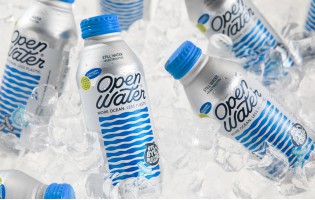Here’s How You Can Avoid Wasting So Much Food During the Holidays
What better time to pig out than the holidays, right? There are so many delicious foods to enjoy at this time of year that, quite frankly, it can be hard to choose which favorite dishes to cook. So why not make them all? It’s a natural response to cook a lot of different dishes and end up with a mountain of leftovers…which, after trying to get creative with some leftover meals, usually end up getting thrown in the trash.
The American Food Waste Problem
If this is your reality, don’t worry! You’re definitely not the only one. Food waste is a worldwide problem that companies, labs, even parts of the government, are continually working to improve. According to the National Resource Defense Council, 40 percent of food produced in the United States goes uneaten. Jonathan Bloom, a journalist who authored the book American Wasteland, wrote that Americans waste up to 160 billion pounds of food in a year—enough to fill the entire Rose Bowl and then some. That’s an awful lot to waste, given that it takes 10 percent of the U.S. energy budget to produce the food, 50 percent of the land to grow it, and 80 percent of the freshwater to cultivate it. This means that almost a third of the water used is wasted on food that is never eaten.
Our world faces a huge food waste dilemma, and trying to tackle the issue can feel like a pretty overwhelming feat. However, numerous experts believe that we can start to solve the food waste problem right in our kitchens—especially around the holidays. Here’s what you can do this holiday season to make a difference in this wasteful crisis.
Think About Portions
Thomas McQuillan, vice president of corporate strategy, culture and sustainability at Baldor Specialty Foods Inc., is convinced that home cooks can make changes that will make a great impact on food waste. The first step, he says, is to consider portions before even shopping for groceries.
“The most significant contribution we can all make to reducing food waste is to not create it in the first place,” says McQuillan. “And the way we do that is we buy the appropriate amount of food.”
Although having a full-size turkey, roast beef or ham looks picturesque on a holiday table, consider if your group will really be able to eat it all.
“Know what the palate of your audience is,” he says. “If you know that your children don’t eat leftovers, then you’d want to buy a bird that’s appropriate for that number of people and the amount of food you anticipate having the day after.”
Store Produce at the Proper Temperature
Storing food at the proper temperature is essential to avoid food spoilage. (Here’s a guide to storing some common holiday foods.) It’s important within your kitchen, but it’s also important at grocery stores. Kevin Payne, vice president of marketing at Zest Labs, points out how stores will place good-looking produce in the front of the store to entice people to buy, leaving that produce at too warm a temperature—leading to faster spoilage. Proper storing temperature is even an issue when products are traveling to retailers.
“Most of the cause of waste occurs within the first 24 to 48 hours after product is harvested,” says Payne. “And it’s due to temperature implications.”
Zest Labs is a freshness management system that works with analytics and artificial intelligence to determine the remaining shelf life of an item. It ensures that items being sold at the store have enough of a shelf life to last the few days until the product is eaten. They’ve partnered with popular grocery stores like Costco and Hy-Vee, along with many growers, to provide customers with the freshest ingredients. Their technology can reduce waste at the retail level by 50 percent or more.
Storing food properly at home is also an important step to avoid spoilage. Here are 13 common foods you’ve probably been storing wrong.
Wait to Wash Ingredients
Now that you have the perfect amount of food that’s being stored at the proper temperature, the next thing to do is wait before washing your products. According to Payne, washing the product can leave it moist, which can lead to bacterial growth. He recommends washing produce right before you eat it.
“A lot of these types of products—things like berries and lettuces, cauliflower and stuff like that—are what we call field packed,” says Payne. The product is cut, packaged, cooled and shipped—but never washed.
When you wash your products, make sure to not cross-contaminate the food products. Doing so can spread toxic bacteria. (This is why you should never wash your Thanksgiving turkey.)
Use the Whole Vegetable
“Most fruits and vegetables are 95-percent consumable, but we waste so much of them,” says McQuillan.
Using up the entire food product is a passion of Baldor Specialty Foods, McQuillan’s place of employment. Baldor is a food distribution company with a commitment of zero organics to landfill. Their Fresh Cuts production processes a million plus pounds of produce a week, using their products to the absolute entirety. Whatever extra they have is sent to the local partner farms, where it’s fed to animals.
“We need to think about ways to utilize food products that we’ve already cooked, like leftover produce items that we choose to discard,” says McQuillan. “So I think the challenge at home is, whatever produce item that we’re going to cook, that we make a commitment to eating all of it.”
So if a company like Baldor can do it, is it really that hard to do at home? There are a lot of ways you can use those leftover food scraps—like these 13 food scraps you never knew you could eat!
Try Composting
Not every home has a nifty partnership with a local farm like Baldor does, but composting is an easy, environmentally friendly alternative. This can be as easy as starting a pile in your own backyard or finding a compost collection service if you live in an urban environment. Here’s how to start composting at home.
“These food products are going to provide our future soils, and the home cook needs to understand that they have an impact on that just as much as everyone else,” says McQuillan.
Garbage disposals may seem like the perfect way to avoid starting a compost pile. But be wary; plumbers advise you to avoid these 12 things you should never throw in your garbage disposal.
“A lot of people have a garbage disposal that grinds everything up. They think that as long as it makes it through it’s good to go,” says Doyle James, president of Mr. Rooter Plumbing. He points out that potato peels, in particular, cause serious issues and are one of the top reasons plumbers get so many service calls the day after Thanksgiving. (The other cause is grease-clogged drains.)
“We recommend people put potatoes and potato peels, vegetable peelings and things like that, into a compost pile,” says James. “Eventually they will biodegrade and go back into the earth.”
Don’t Fill the Fridge
How many times have you found food in the fridge that you didn’t even know was in there anymore? Since refrigerators have a lot of storage space, many people try to fill it all up. But McQuillan has a brilliant solution that will help you stop that leftover food waste from occurring: Stop filling the fridge!
“Try to use half of your refrigerator or freezer space,” he says.
McQuillan points out that having a full fridge means you probably have at least five days of meals in there, maybe seven. He doesn’t recommend eating food that far out. Instead, evaluate what you already have in the fridge, plan meals around that and buy only what you need.
“The other thing I like to encourage home chefs to do is to try and almost eat completely all of the food you have in the refrigerator or freezer,” says McQuillan. “That means pairing foods together in order to eliminate that food product. That may require you to go to the grocery store a little more often. But the food will be [fresher]. And if your goal is to eliminate waste, you absolutely will achieve that.”
Donate Food
It’s the holidays, after all. One of the sweetest ways to use up the food you have is to donate it to the immediate community members in need around you. Remember, donating food doesn’t have to look so corporate—like giving canned foods for a drive, or giving food to a soup kitchen. Donating food can be as simple as sitting together at your table or handing a platter to someone next door.
“I do think we have homes among us that need food,” says McQuillan. “Think about who those people are and invite them over to your holiday meal, or let them know that you’re making food at 4 and could make a platter to bring over at 6 when you’re done eating.”
If you’re not sure where to donate in your community, he recommends asking a local pastor or rabbi. They may be able to point you in the right direction, or even coordinate a donation to keep the family’s identity confidential.
“There [are] lots of people in our community in need,” McQuillan says. “Share food, share love, and that’s what the holidays should be all about.”


























































































































































































































 Fruits
Fruits  Organics
Organics  Vegetables
Vegetables  Fresh Cuts
Fresh Cuts  Meat & Poultry
Meat & Poultry  Grocery
Grocery  Dairy
Dairy  Cheese
Cheese  Bakery
Bakery  Seafood
Seafood 